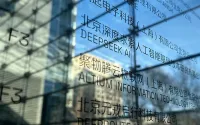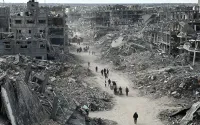31 May 2007Clifford Coonan
The clear water of the Min river in the Jiuzhaigou National Park is a candidate for the cleanest in China. It is filtered by 108 lakes as it makes its way down from the glaciers of this vast nature reserve before feeding into the Yangtze river.
Back up through the mists, along a spectacular cliff-lined valley, there is Long Lake, a blue glacial expanse of water, while higher up in this mountainous park you can find corrie glaciers. Waterfalls line the route, azure pools brim over with fresh water.
Yet this beautiful park, completely defined by water, is threatened by climate change. Normally a winter wonderland, there was no snow at all last year. The glaciers will get warmer and melt, the rivers will have less water, although rainfall makes up much of the water flowing through the park.
With one eye on the attempt to forge a climate change pact at the forthcoming G8 meeting in Berlin, the environmental group Greenpeace has warned that the melting of Tibet's mountains could choke off water sources vital for large parts of China.
Sichuan province in south-western China relies on water from the Tibetan peninsula. At Kanding, several hundred kilometres away from Jiuzhaigou, there are valley glaciers which are seriously imperilled by rising temperatures. All across the Qinghai-Tibet highland that spans much of western China, global warming is speeding the retreat of glaciers, stoking evaporation of glacial and snow run-off, and leaving dwindling rivers that are dangerously clogged with silt, says Greenpeace in a report on climate change in the region.
Chinese government research shows that global warming is melting the plateau at 7 per cent annually. These glaciers account for 47 per cent of the total coverage in China. Water from the mountain region feeds the Yellow, Yangtze and other rivers that feed hundreds of millions of people across China and South Asia, said Li Yan of Greenpeace's Beijing office.
"Climate change is the major factor leading to the overall ecological degradation in this region while localised human activities, such as industry and agriculture, have aggravated the situation," the Greenpeace report says.
The Qinghai-Tibet plateau covers 2.5 million square kilometres - about a quarter of China's land surface - at an average altitude of 4,000m above sea level. "The river itself is under threat from this deterioration in its birthplace," the report says of the Yellow river. The environmental group cited one forecast that 80 per cent of the glacial area in Tibet and surrounding parts could disappear by 2035. It is still unclear exactly how quickly the glaciers will melt.
Conservationists working in the region say the issue is climate change, which can mean both warming and cooling, although they say the impact of both could be immense on rain and snowfall.
Multiplying pools of water accumulating from melted glaciers are building up and then bursting, endangering people living downstream, Ms Li said.
Greenpeace researchers who surveyed the slopes of Mt Everest this year and last to document glacier retreat said that local herders were not seeing more abundant water from the melting. Instead increased evaporation and accumulation in unstable glacier lakes were making water flows less predictable and more dangerous, Ms Li said.
In a video shown by the Greenpeace team, a Tibetan monk who has lived on the lower slopes of Everest for many years, said: "Now the winter is as hot as summer. The weather change is obvious."






